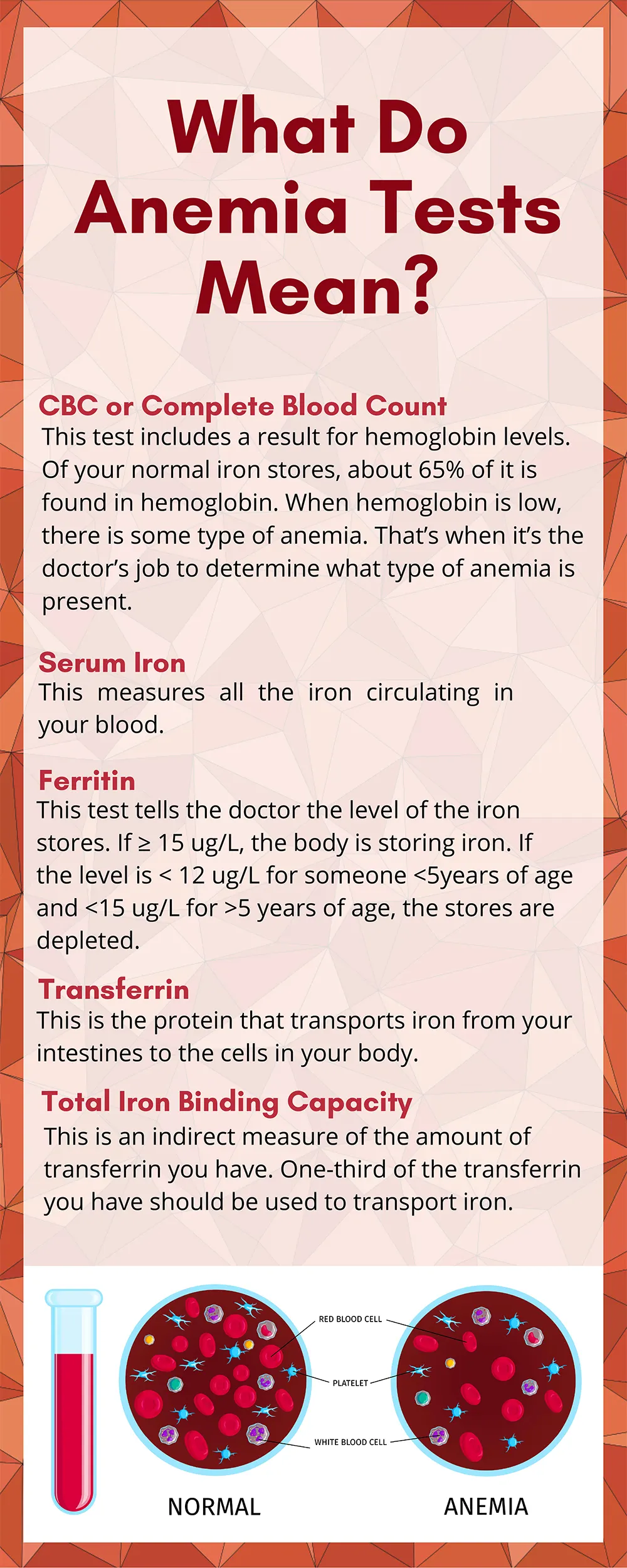How Common is Anemia?
There are many types of anemia. Some of them are vitamin B12 pernicious anemia, iron deficiency anemia, aplastic anemia, thalassemia, and vitamin deficiency anemia.
Iron deficiency anemia affects the greatest number of people for any health issue. It affects 2.36 billion people worldwide! Eleven percent of 1-year-olds in the U.S. have an iron deficiency.
A clue that someone has iron deficiency anemia will be seen on a simple and inexpensive blood test called the CBC, or Complete Blood Count. When the hemoglobin levels fall, this indicates that there is some type of anemia. That’s when it’s the doctor’s job to determine what type of anemia is present.
To test for iron deficiency anemia, tests of ferritin, TIBC, serum iron, and transferrin saturation will be done. After hemoglobin levels are low, the doctor will run other tests to give a more complete picture of what is happening in the body.
Iron deficiency anemia is the most common among pregnant women and their babies. The problem is that most U.S. babies are not screened for anemia till they are 1 year old even though it can be determined with that simple CBC blood test.
According to the World Health Organization (WHO), 39.8% of children between 6 months and 6 years old suffered from anemia in 2019. Many of these are in the U.S. but the highest anemia rate in children under five years old is in Africa. There, they have a rate of 60.2%
Source: https://www.who.int/data/gho/data/themes/topics/anaemia_in_women_and_children
What About Anemia in Moms
The level of moms with anemia has to be pretty high for their babies to end up with anemia. Babies are getting all their nutrition from Mom in the womb, and if there’s little to offer them, they end up low as well.
Thirty percent of women between the ages of 15 and 49 years old suffered from anemia in 2019, according to the WHO. These women weren’t all moms. They were healthy women that could become pregnant one day soon. And that is the problem with women having low levels of iron and anemia – when the moms don’t know they are pregnant until the fifth or sixth week, all that time has elapsed with the baby not getting enough iron. It’s affecting his IQ, brain functions, motor development, moods, and behavior – in the womb.
A study by the Guttmacher Institute found that one in four women with low income suffer from anemia between 4 and 26 weeks after giving birth. Women who had been anemic during their pregnancy were 2.7 times more likely to be anemic after birth. And that means that their babies are also anemic. If you don’t have it (iron), you can’t give it. https://www.guttmacher.org/journals/psrh/2002/01/postpartum-anemia-more-common
-and-lasts-longer-poor-women-those-who-are-better
Anemia Affects Moms by Causing Depression
The problem goes further. No doubt, you have heard of women who end up giving birth and then fall into a deep depression called postnatal depression. There may be a nutritional reason for this related to iron deficiency.
Women with anemia are more likely to be admitted to the hospital for depression than those without, according to one Australian study. Depression was associated with anemia in women both before and after birth. The scientists followed the women for three full years prior to giving birth and found the connection. https://bmcpsychiatry.biomedcentral.com/articles/10.1186/s12888-018-1796-6 (BMC Psychiatry, July 13, 2018)
Read more about the symptoms of iron deficiency anemia and see if you should ask your doctor to check you here: Symptoms of iron deficiency article

